IEEE Std 1588-2008 Front Cover
Title Page
Introduction
History
Notice to users
Laws and regulations
Copyrights
Updating of IEEE documents
Errata
Interpretations
Patents
Participants
Acknowledgments
CONTENTS
TABLES
FIGURES
Important Notice
1. Overview
1.1 Scope
1.2 Purpose
1.3 Layout of the document
2. Normative references
3. Definitions, acronyms, and abbreviations
3.1 Definitions
3.2 Acronyms and abbreviations
4. Conventions
4.1 Descriptive lexical form syntax
4.2 Word usage
4.3 Behavioral specification notation
5. Data types and on-the-wire formats in a PTP system
5.1 General
5.2 Primitive data type specifications
5.3 Derived data type specifications
5.4 On-the-wire formats
6. Clock synchronization model
6.1 General
6.2 Principle assumptions about the network and implementation recommendations
6.3 PTP systems
6.4 PTP message classes
6.5 PTP device types
6.6 Synchronization overview
6.7 PTP communications overview
7. Characterization of PTP entities
7.1 Domains
7.2 PTP timescale
7.3 PTP communications
7.4 PTP communication media
7.5 PTP ports
7.6 PTP device characterization
7.7 PTP timing characterization
8. PTP data sets
8.1 General specifications for data set members
8.2 Data sets for ordinary and boundary clocks
8.3 Data sets for transparent clocks
9. PTP for ordinary and boundary clocks
9.1 General protocol requirements for PTP ordinary and boundary clocks
9.2 State protocol
9.3 Best master clock algorithm
9.4 Grandmaster clocks
9.5 Message processing semantics
9.6 Changes in the local clock
10. PTP for transparent clocks
10.1 General requirements for both end-to-end and peer-to-peer transparent clocks
10.2 End-to-end transparent clock requirements
10.3 Peer-to-peer transparent clock requirements
11. Clock offset, path delay, residence time, and asymmetry corrections
11.1 General specifications
11.2 Computation of clock offset in ordinary and boundary clocks
11.3 Delay request-response mechanism
11.4 Peer delay mechanism
11.5 Transparent clock residence time correction for PTP version 2 events
11.6 Asymmetry correction for PTP version 2 event messages
12. Synchronization and syntonization of clocks
12.1 Syntonization
12.2 Synchronization
13. PTP message formats
13.1 General
13.2 General message format requirements
13.3 Header
13.4 Suffix
13.5 Announce message
13.6 Sync and Delay_Req messages
13.7 Follow_Up message
13.8 Delay_Resp message
13.9 Pdelay_Req message
13.10 Pdelay_Resp message
13.11 Pdelay_Resp_Follow_Up message
13.12 Signaling message
13.13 Management message
14. TLV entity specifications
14.1 General requirements
14.2 Experimental TLVs
14.3 Vendor and standard organization extension TLVs
15. Management
15.1 General
15.2 PTP management mechanism
15.3 Processing of management messages
15.4 Management message format
15.5 Management TLVs
16. General optional features
16.1 Unicast message negotiation (optional)
16.2 Path trace (optional)
16.3 Alternate timescales (optional)
17. State configuration options
17.1 General
17.2 Data types for options
17.3 Grandmaster clusters (optional)
17.4 Alternate master (optional)
17.5 Unicast discovery (optional)
17.6 Acceptable master table (optional)
18. Compatibility requirements
18.1 Compatibility between version 2 and future versions
18.2 Compatibility between version 1 and version 2
18.3 Message formats and data types
18.4 Naming changes
18.5 Restrictions on mixed version 1 and version 2 systems
19. Conformance
19.1 Conformance objective
19.2 PTP conformance requirements
19.3 PTP profiles
Annex A (informative) Using PTP
Annex B (informative) Timescales and epochs in PTP
Annex C (informative) Examples of residence and asymmetry corrections
Annex D (normative) Transport of PTP over User Datagram Protocol over Internet Protocol Version 4
Annex E (normative) Transport of PTP over User Datagram Protocol over Internet Protocol Version 6
Annex F (normative) Transport of PTP over IEEE 802.3 /Ethernet
Annex G (normative) Transport of PTP over DeviceNET
Annex H (normative) Transport of PTP over ControlNET
Annex I (normative) Transport of PTP over IEC 61158 Type 10
Annex J (normative) Default PTP profiles
Annex K (informative) Security protocol (experimental)
Annex L (informative) Transport of cumulative frequency scale factor offset (experimental)
Annex M (informative) Bibliography
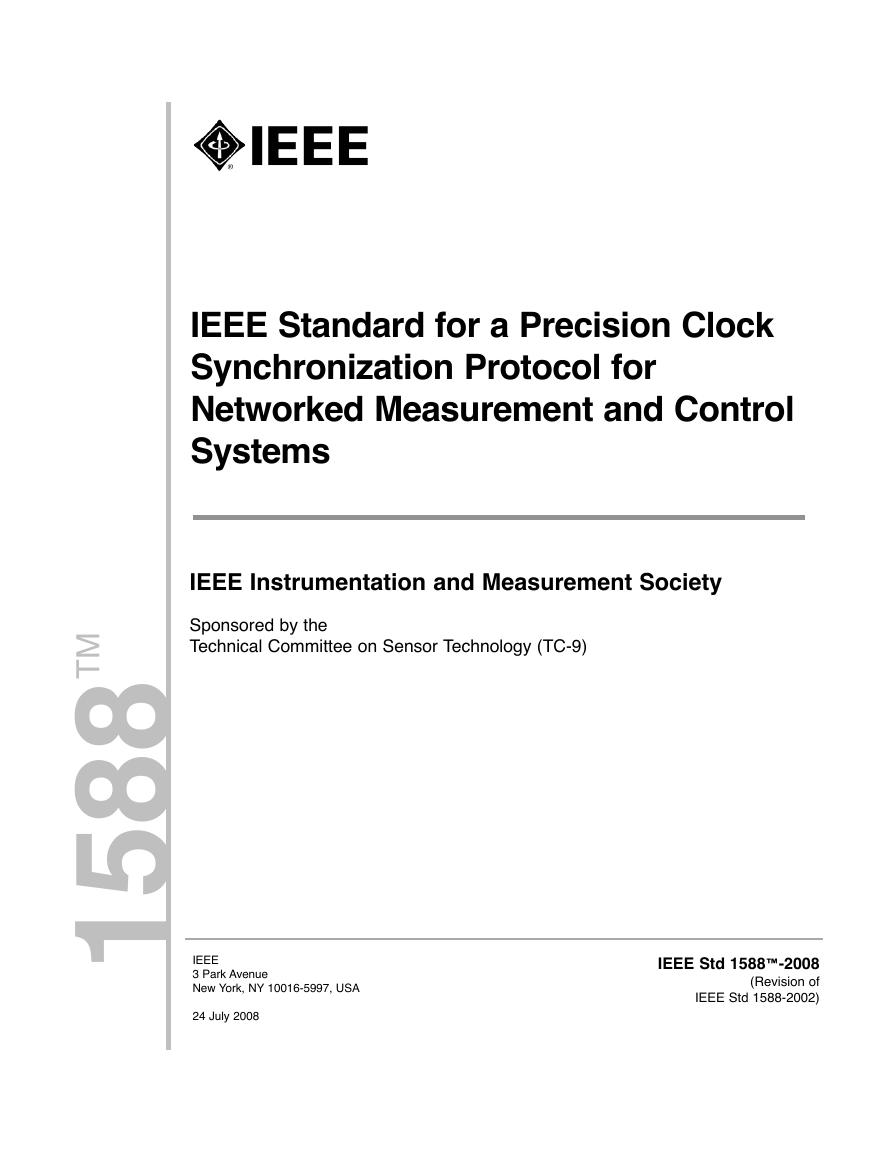

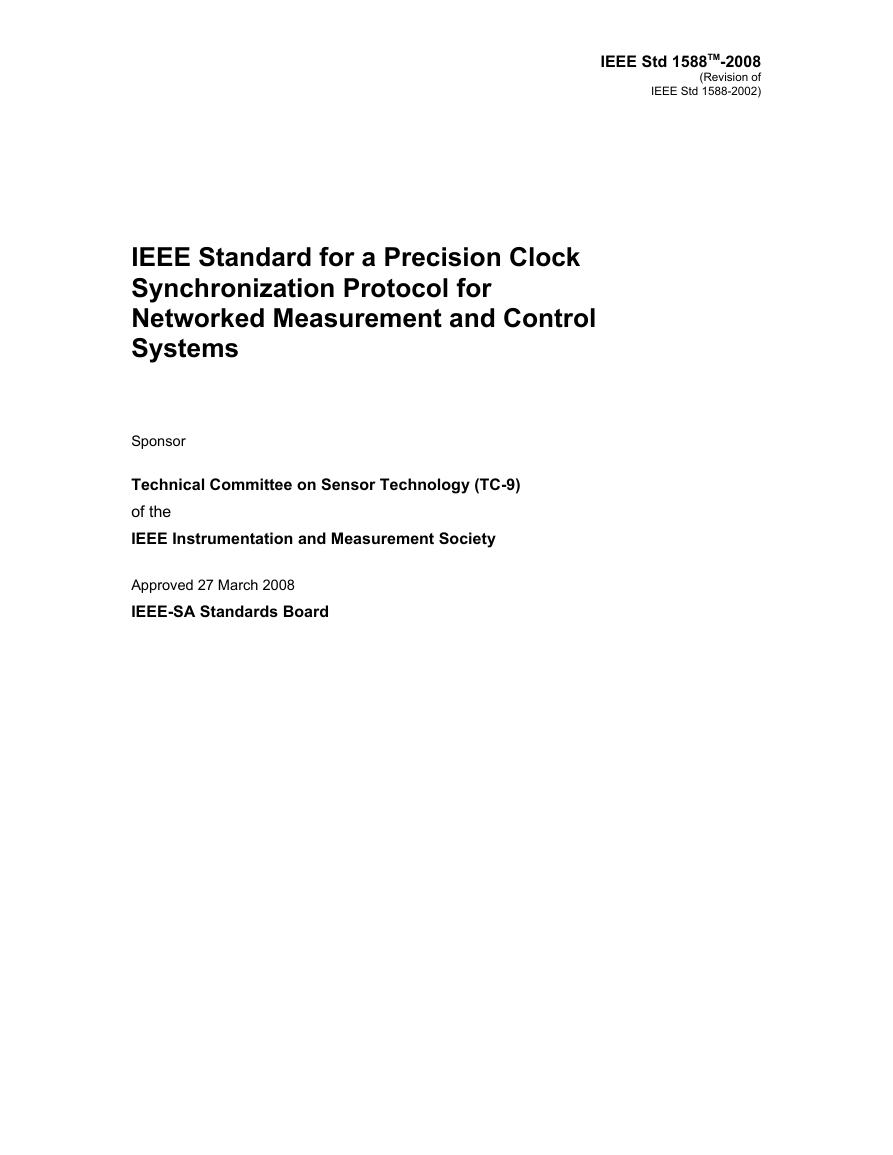


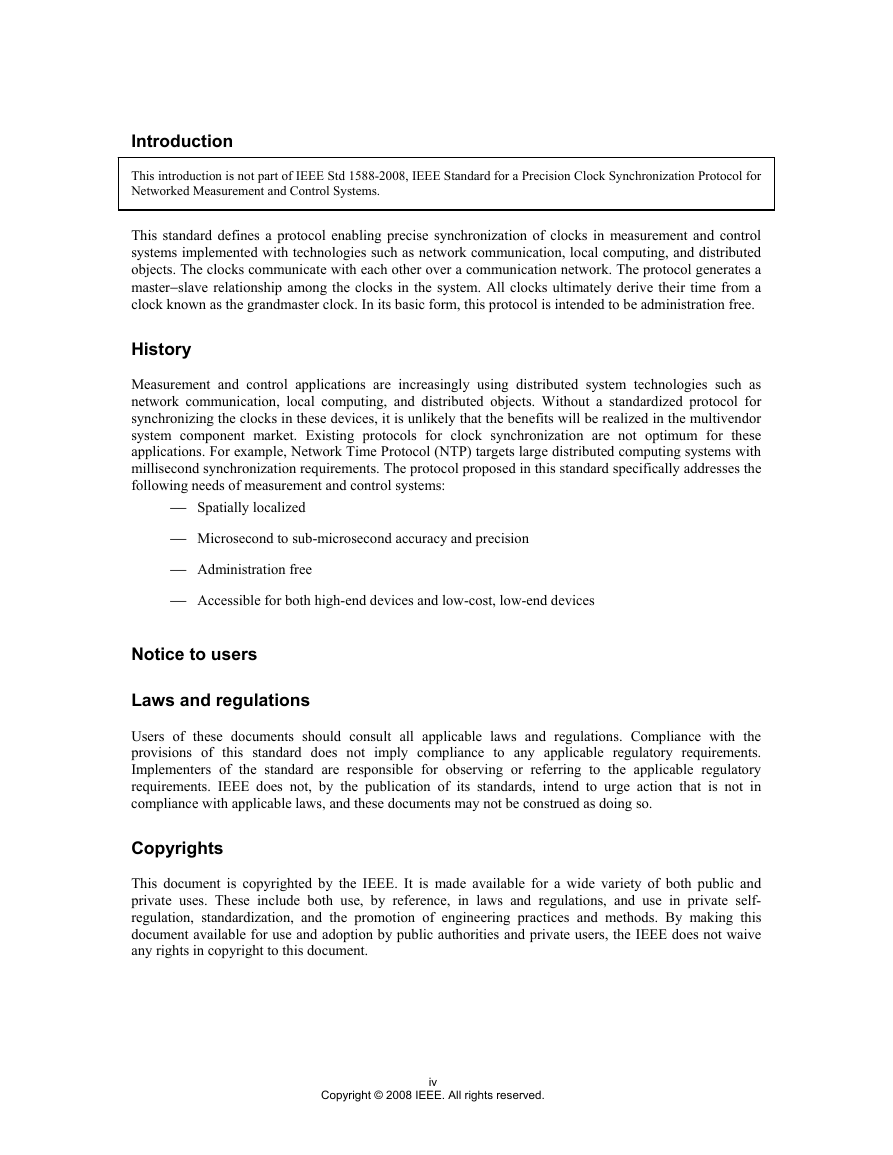
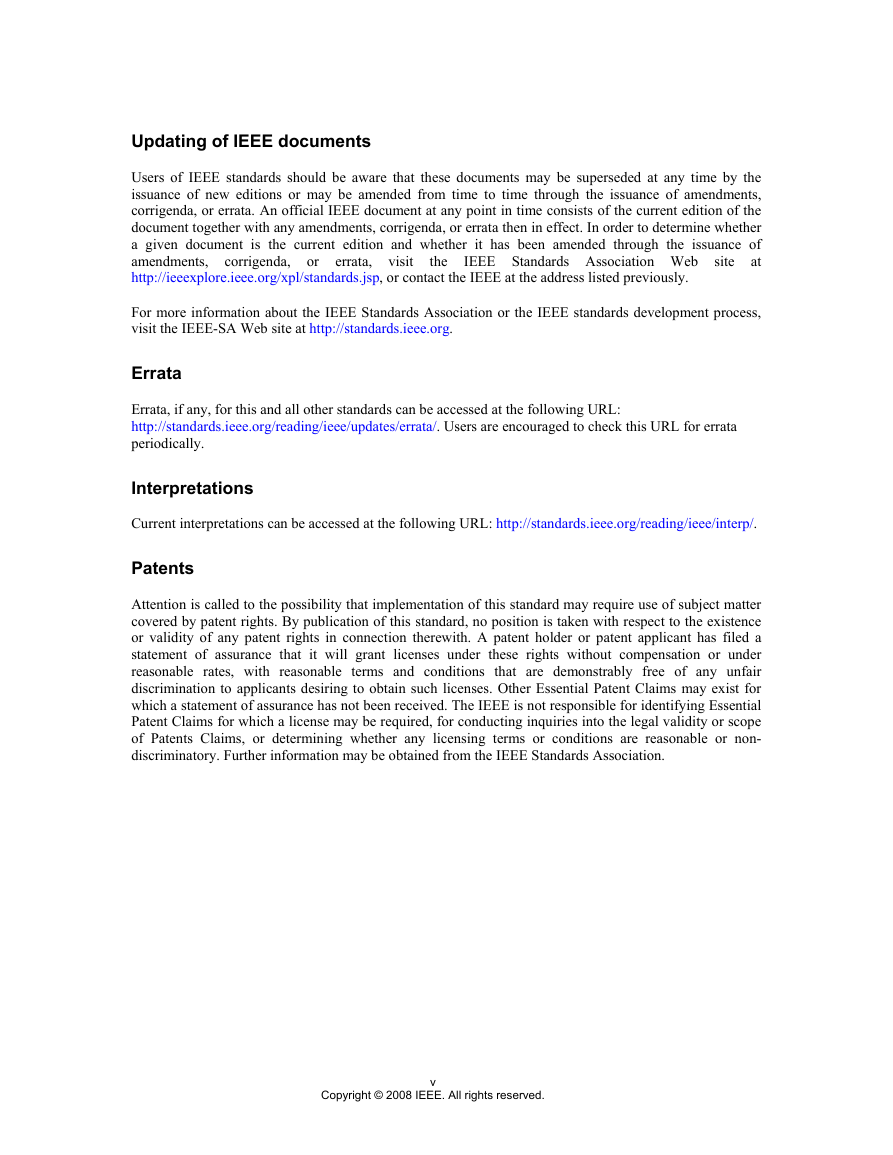
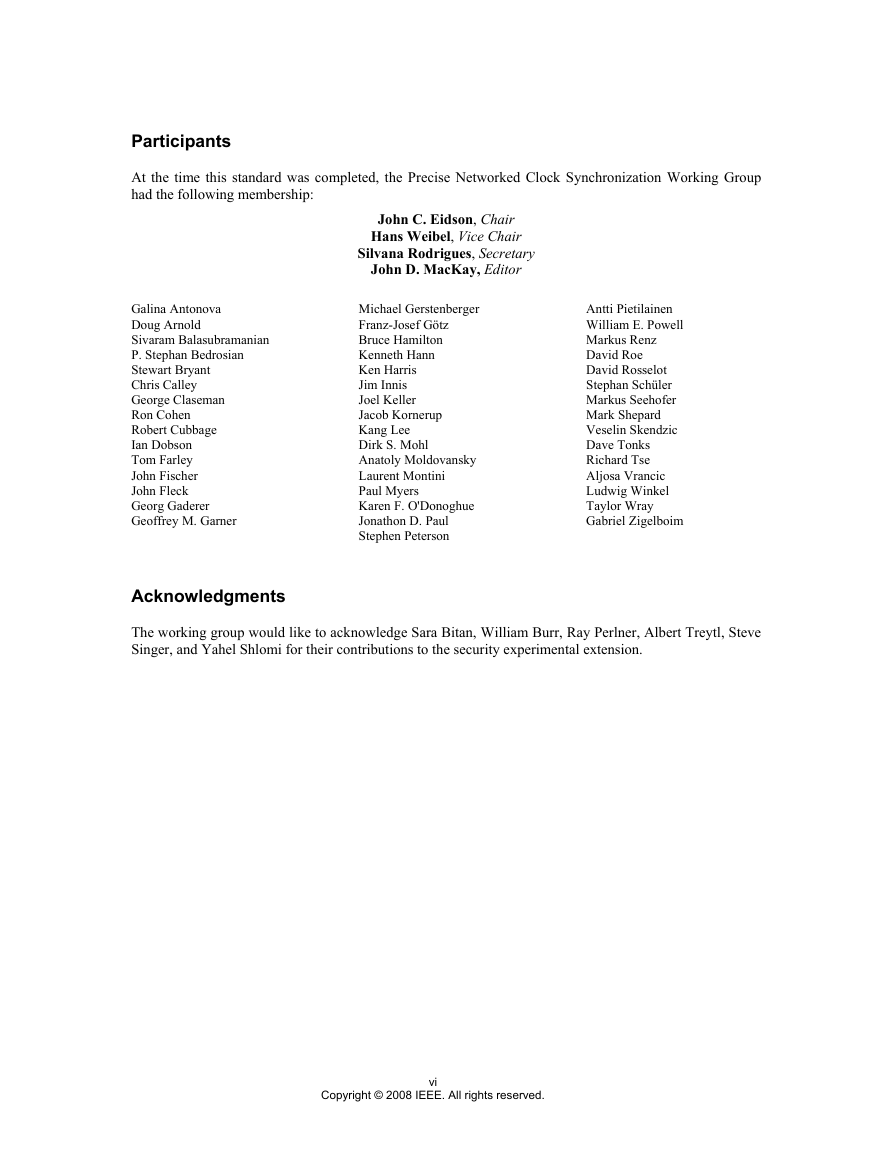








 2023年江西萍乡中考道德与法治真题及答案.doc
2023年江西萍乡中考道德与法治真题及答案.doc 2012年重庆南川中考生物真题及答案.doc
2012年重庆南川中考生物真题及答案.doc 2013年江西师范大学地理学综合及文艺理论基础考研真题.doc
2013年江西师范大学地理学综合及文艺理论基础考研真题.doc 2020年四川甘孜小升初语文真题及答案I卷.doc
2020年四川甘孜小升初语文真题及答案I卷.doc 2020年注册岩土工程师专业基础考试真题及答案.doc
2020年注册岩土工程师专业基础考试真题及答案.doc 2023-2024学年福建省厦门市九年级上学期数学月考试题及答案.doc
2023-2024学年福建省厦门市九年级上学期数学月考试题及答案.doc 2021-2022学年辽宁省沈阳市大东区九年级上学期语文期末试题及答案.doc
2021-2022学年辽宁省沈阳市大东区九年级上学期语文期末试题及答案.doc 2022-2023学年北京东城区初三第一学期物理期末试卷及答案.doc
2022-2023学年北京东城区初三第一学期物理期末试卷及答案.doc 2018上半年江西教师资格初中地理学科知识与教学能力真题及答案.doc
2018上半年江西教师资格初中地理学科知识与教学能力真题及答案.doc 2012年河北国家公务员申论考试真题及答案-省级.doc
2012年河北国家公务员申论考试真题及答案-省级.doc 2020-2021学年江苏省扬州市江都区邵樊片九年级上学期数学第一次质量检测试题及答案.doc
2020-2021学年江苏省扬州市江都区邵樊片九年级上学期数学第一次质量检测试题及答案.doc 2022下半年黑龙江教师资格证中学综合素质真题及答案.doc
2022下半年黑龙江教师资格证中学综合素质真题及答案.doc